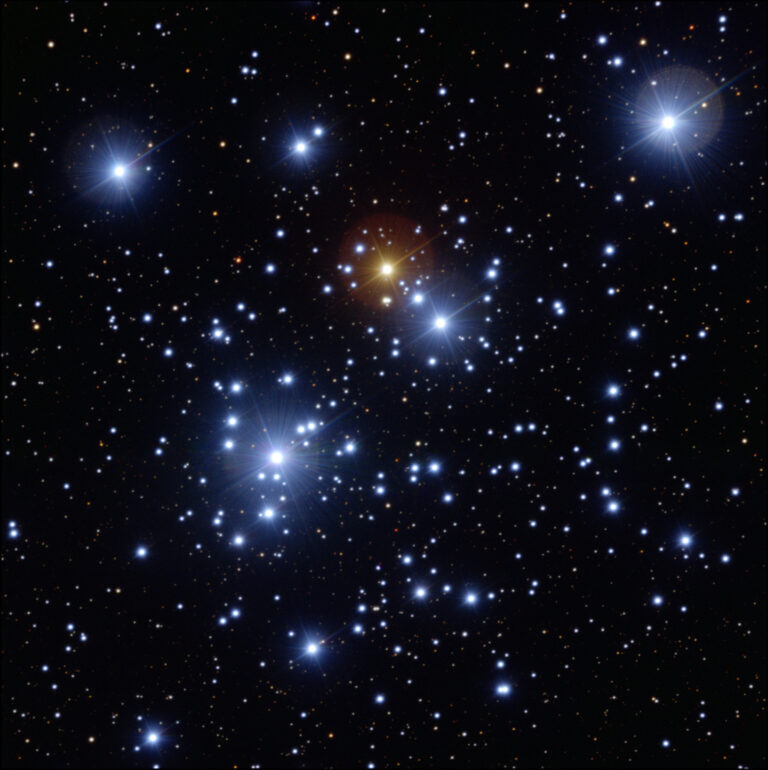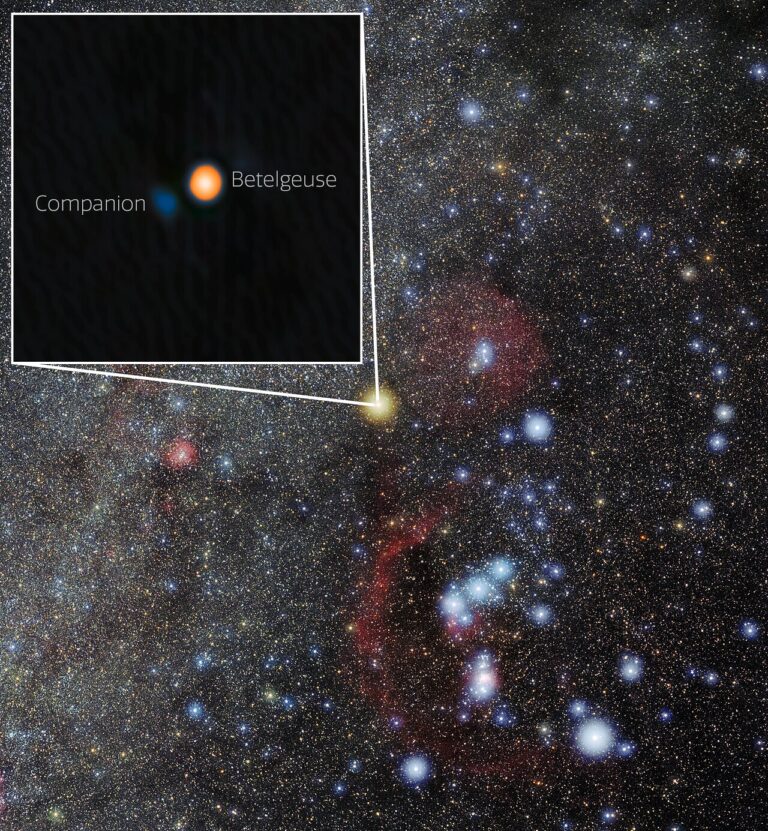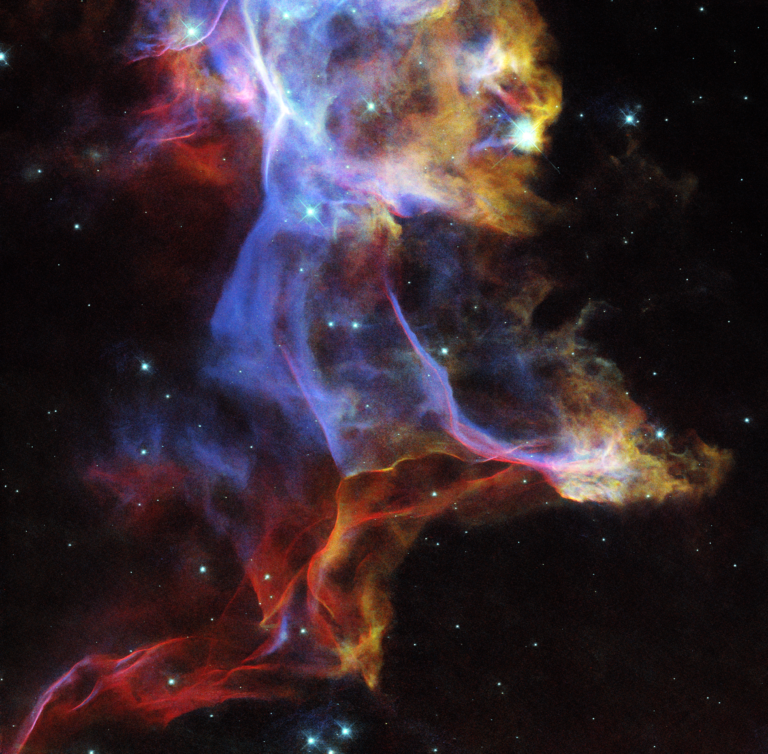Key Takeaways:
Supernovae occur when stars explode. When you think of a supernova, the type you most likely imagine is a type II or core-collapse supernova. This type of cosmic blast happens when a star about 10 times the mass of our Sun (or more) detonates at the end of its life, leaving behind either a neutron star or a black hole. The other type of supernova, type I, occurs when the remnant of a Sun-like star, called a white dwarf, siphons material from a nearby companion. Matter piles up on the white dwarf’s surface and, once it tips over a certain mass limit, a runaway thermonuclear explosion rips the white dwarf apart.
However, calculations dating back to 1980 show that there should be a third type of supernova, called an electron-capture supernova. This type of explosion occurs only to stars in a narrow mass range — 8 to 10 solar masses — which straddle the line between quietly evolving into white dwarfs and explosively birthing neutron stars or black holes when they die.
Electron-capture supernovae also produce neutron stars like some type II supernovae. But before the star can die, magnesium and neon atoms that have piled up in its core begin capturing the free-floating electrons around them, which are responsible for the outward pressure keeping the star’s core stable. As the electrons are absorbed, it reduces that outward pressure, causing the star’s inner regions to collapse into a neutron star while the outer regions simultaneously blast outward as a supernova explosion.
In March 2018, Japanese amateur astronomer Koichi Itagaki spotted a new supernova in the galaxy NGC 2146, which lies roughly 30 to 40 million light-years away in the constellation Camelopardalis. Now, researchers have analyzed the blast and, in a paper published June 28 in Nature Astronomy, announced it neatly fits the profile of an electron-capture supernova.
A perfect match
What’s unique about this new supernova, called SN 2018zd, is that astronomers were able to compare Hubble and Spitzer space telescope images of its host galaxy before and after the explosion. This helped them identify the likely progenitor star that precipitated the blast.
“That was one of the key components that had never been done for other candidate electron-capture supernovae — they had never had a viable identified progenitor star, the star that explodes,” said study co-author Alex Filippenko of the University of California, Berkeley, in a press release. This time, though, astronomers were able to compare both the star and the light from its supernova blast to the expected profile of an electron-capture supernova.
The observations fit expectations perfectly, matching all six expected criteria for such an event.
First, the progenitor was a type of red giant, or aging star, called a super-asymptotic giant branch star. These stars are between 8 and 10 solar masses and are believed to be the progenitors of electron-capture supernovae. Second, that progenitor had shed much of its mass prior to exploding, puffing away its outer layers into a cloud of material around it. Third, that material showed the unique chemical composition expected to precede an electron-capture supernovae: abundant helium, carbon, and nitrogen, but little oxygen. Fourth, the explosion itself was weaker than would be expected for a core-collapse supernova. Fifth, the explosion’s light behaved how astronomers expected it would for an electron-capture supernova: The light lingered for more than 100 days as material in the shock wave hit the outer layers the star had previously blown off, generating a long-lasting glow before dropping off. Finally, the composition of the material left behind — particularly the presence of stable nickel but not radioactive nickel (the latter of which is common after core-collapse supernovae) — is also what astronomers expect from an electron-capture supernova.
Key to the past
The researchers say SN 2018zd has provided the first solid evidence that electron-capture supernovae really exist. Now, they hope to use this example as a template to identify other such supernovae that pop off in the sky.
Proving that electron-capture supernovae are out there ultimately helps astronomers better understand the life cycles of stars. “It is teaching us about fundamental physics — how some neutron stars get made, how extreme stars live and die, and about how the elements we’re made of get created and scattered around the universe,” said co-author Andrew Howell of Las Cumbres Observatory and UC Santa Barbara, who leads the Global Supernova Project to observe supernovae.
While the team is largely looking to a future in which we better understand the deaths of massive stars, SN 2018zd is also providing clues about another event from the distant past: The supernova of A.D. 1054, which created the famous Crab Nebula (M1) and its central pulsar. Astronomers have long suspected this supernova was an electron-capture supernova. In fact, it was previously the best-fitting example of such a supernova, despite the lack of complete records — at that time, there were no telescopes, spectrometers, or other instruments that could help observers characterize the explosion or progenitor star.
Nonetheless, the Crab does fit several of the criteria for an electron-capture supernova: the neutron star it left behind, the chemical composition of the nebula, and way the ancient records detail how its light steadily lingered in the daytime sky for 23 days and remained visible at night for nearly two years before dropping off. Furthermore, the way the nebula’s filaments continue to slowly expand over time indicates they’re moving through a cloud of material, likely shed from the progenitor star before the blast.
With the observation of SN 2018zd, the team now thinks they’ve uncovered the strongest evidence yet linking the Crab to an electron-capture supernova. Seeing the Crab in this new light could help researchers better develop their model of electron-capture supernovae by providing an example of how they evolve in the centuries after they explode. And that, in turn, will reveal more about the galaxy and universe we inhabit, including how the flashy deaths of massive stars fling the building blocks of life across the cosmos.










